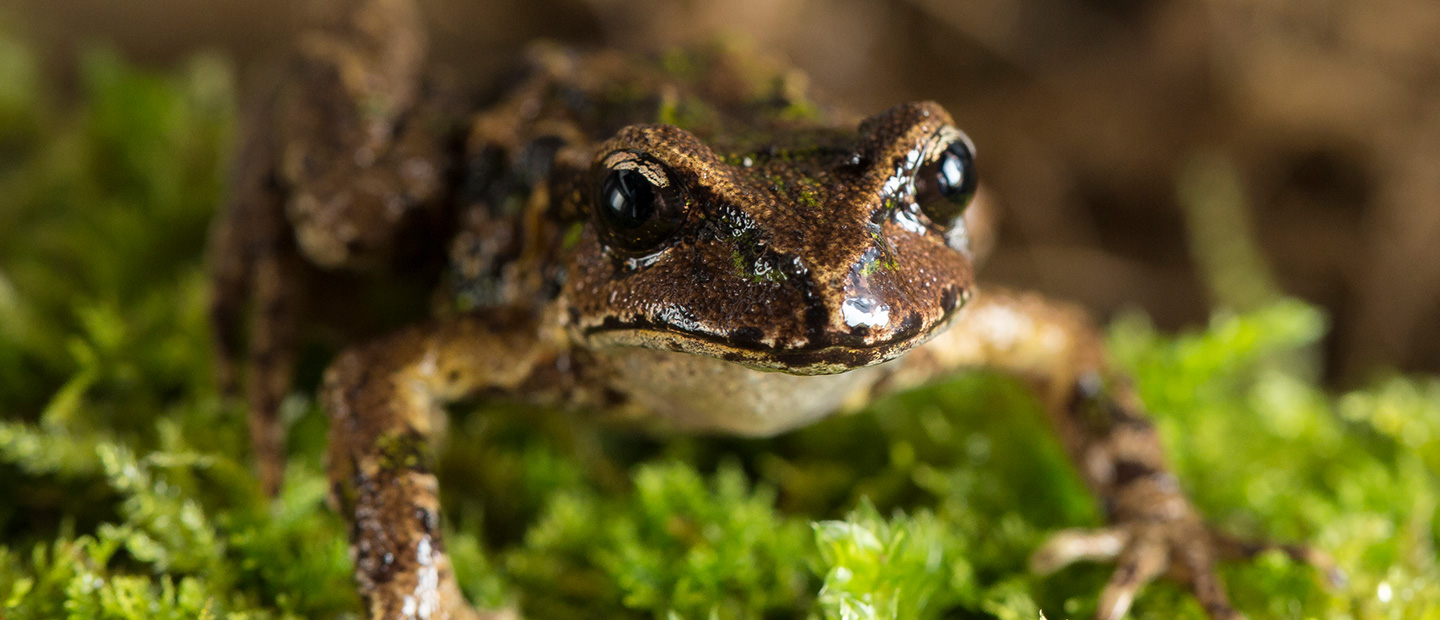Auckland Zoo is celebrating a big leap forward in the breeding and rearing of New Zealand's rare and unique Archey's frog, the world's most evolutionarily distinct and globally endangered amphibian.
Three Archey's frogs which metamorphosed successfully in December 2013 continue to thrive under the care of the Zoo's Ectotherms team. A further seven froglets resulting from fertile eggs laid in October 2015 (each now just half a centimetre long) are also going strong. These breeding successes, the first of their kind, have boosted the Zoo's Archey's frog population to 25.
"It's especially exciting and enormously satisfying to have celebrated the recent second birthday of the three older frogs," says the Zoo's curator of Ectotherms and Birds, Richard Gibson.
"Auckland Zoo enjoys the great privilege of holding the only captive population of Archey's frog in the world.
"It's taken years to perfect the conditions necessary to achieve increasingly consistent breeding with these incredibly cryptic and sensitive animals, but through this work we're gaining a greater understanding of the biology of the species, which will better equip us to help save Archey's frogs in the wild," says Richard.
Key to successful breeding has been the ability to mimic the Archey's frog's natural environment of the cool, damp, high altitude forests of Coromandel and Whareorino, and also to simulate dad's role as carer of the eggs, tadpoles and young froglets.
Chilled pipes run through the soil in the frog enclosures to keep the ground cold and the Ectotherms team manipulate temperatures to make ambient conditions hotter and dryer in summer and cooler and wetter in winter.
Says Richard: "We artificially incubate and rear any eggs not cared for by their dad, irrigating them with water that dad's been bathed in to ensure any important skin secretions are reaching the eggs. Once hatched, the tadpoles are placed on damp paper towels in the shape of dad's back, where they stay until metamorphose into froglets."
Along with breeding Archey's frogs, the Ectotherms team regularly assists Department of Conservation (DOC) staff with monitoring wild populations and planning conservation actions. In April, to progress efforts to conserve these 'living fossils’, the Zoo team and DOC colleagues will be collecting 80 Archey's frogs from the Whareorino forest, the largest and best-studied population, which benefits from intensive mammalian predator control activities, including a recent 1080 aerial drop.
"We will health-screen and sex these frogs (using chemical analysis of their urine) at the Zoo and hold them here over winter. Come spring, 60 of the frogs will be released into a fenced part of Pureora forest to reinforce a small reintroduced population there.
"The remaining 20 will stay here at the Zoo to diversify our captive population and further develop best-practice husbandry," says Richard.


